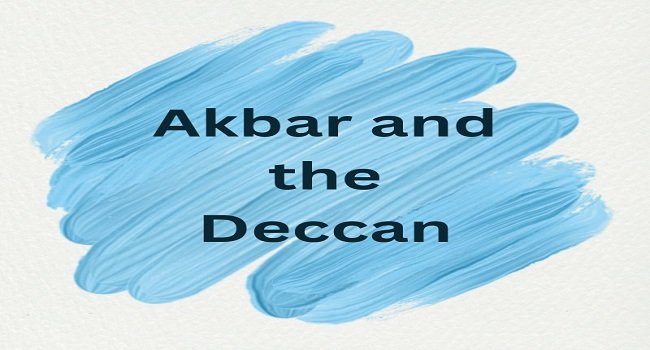Akbar and the Deccan:
The five leading states of the Deccan were Khandesh, Ahmednagar, Bijapur, Bidar, and Golconda. The Deccan, riven with factional fights, was a happy hunting ground for the Portuguese owing to the economic resources of the country. It was difficult for Akbar to tolerate the growing power of the Portuguese who had been interfering in pilgrim traffic to Mecca. Moreover, they had been trying to control Surat, an important trading centre.
In 1591 Akbar sent embassies to the Deccan Sultans demanding submission to Mughal authority. With the exception of Khandesh, whose ruler sent his daughter to be married to Prince Salim, all others sent evasive answers. Akbar, therefore, decided to bring the Deccan States under his control. Military operations began in 1593 but were hamstrung with differences of opinion between the imperialist generals, Prince Murad and Abdur Rahim, the Khan-i-Khanan. However, in 1595 the Mughal Army besieged Ahmednagar, which was bravely defended by Chand Bibi. But in 1596 she was forced to accept a treaty by which Berar was ceded to the emperor. However, a faction at Ahmednagar renewed the war in violation of the Treaty. The Mughal forces consequently stormed the Fortress of Ahmednagar in August 1600.
Meanwhile, Miran Bahadur Shah, the ruler of Khandesh defied the Mughal authority, relying on the strength of his impregnable fortress, Asirgarh. Akbar realized that his personal presence in the Deccan was of paramount importance to subdue the recalcitrant Sultans. He marched to the south in July 1599. After crossing the Narmada, Akbar occupied Burhanpur, the capital of Khandesh, the latter being the hinterland of Surat and the Gujarat seaports. He then laid siege to Asirgarh, a few miles distant from Burhanpur. It was one of the strongest fortresses in the world and amply provided with ammunition and provisions that could last for years. The siege dragged on till 17 January 1601, when Akbar occupied it by corrupting the Khandesh officers by lavish distribution of money.
After organizing the newly conquered territories into three Subahs- Ahmadnagar, Berar, and Khandesh- and assigning Prince Daniyal to administer them, Akbar returned to Agra on 23 August 1601. However, the annexation was in form only as Deccan was far away from Agra or Delhi to be effectively governed and the dispossessed Sultans began to raise their heads after Akbar’s departure.
By the time of his death in 1605, Akbar controlled a broad sweep of territory from the Bay of Bengal to Qandahar and Badakshan. He touched the western sea in Sind and at Surat and was well astride central India. He had the richest and most vigorous as well as the largest territorial share of India and the north-west. The empire was knit together by waterways from Bengal to Delhi and by imperial highways everywhere.








![Muslim League [December 30, 1906] 9 Muslim League](https://gkscientist.com/wp-content/uploads/2021/05/Muslim-League.jpg)
Comments (No)